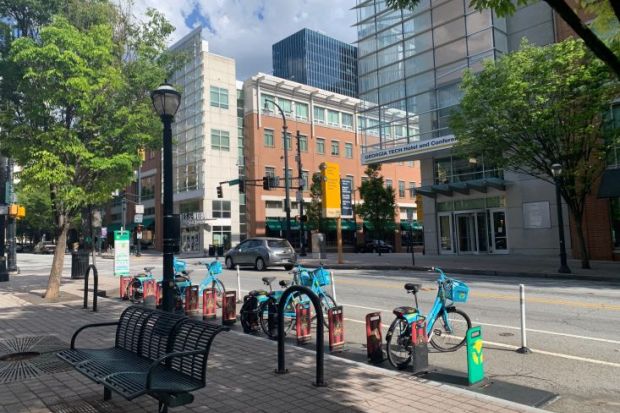Over the past two and a half decades, partnerships between universities and venture capitalists have transformed many urban areas into powerful innovation districts. These gleaming zones have spawned tech start-ups, attracted high-paying jobs and grown biotech giants. Yet for all their many benefits, universities need to reflect seriously on how they are transforming the neighbourhoods they call home.
Kendall Square in Boston, Technology Square in Atlanta, University City in Philadelphia and Aggie Square in Sacramento are just some examples of these university-anchored innovation districts, co-created with the Massachusetts Institute of Technology, the Georgia Institute of Technology, Drexel University and the University of California, Davis, respectively. Even regional comprehensive universities in medium-sized cities have embraced similar strategies.
The aftermath of the 2008 financial crisis brought to the fore many concerns about the inner workings of colleges and universities, with elected officials, the media and the public criticising what they saw as inwardly focused institutions. A push for greater relevance by realigning higher education practices with wider social goals required universities to become more entrepreneurially minded, which helped strengthen many existing initiatives while also leading to the creation of many new enterprises.
Innovation districts have already contributed to the fight against the global pandemic through research on vaccines and other healthcare needs. Consider that Pfizer operates a state-of-the-art R&D hub, focusing on biotech, that brings together 1,000 employees in Kendall Square. (In fact, the site’s laboratory facilities are leased from MIT.) The global headquarters of Moderna are also located there.
In Atlanta, Tech Square has experienced significant expansion in the past decade, leading to increased business diversification. Georgia Tech successfully attracted corporations to locate their innovation labs in the area. AT&T, Boeing, Coca-Cola, Deloitte, Delta and Home Depot are some of the companies now present there.
After making certain adjustments, innovation districts should successfully weather many of the current challenges associated with Covid-19. Yet because of the increase in remote and hybrid employment options, post-pandemic conditions may lead to more diversification in the office real estate market, with existing commercial space subdivided to incorporate retail and even residential usage. This could allow previously priced-out entrepreneurs to operate there, and in the process help increase the downtown residential population.
It is also worth mentioning that the Tax Cuts and Jobs Act of 2017 led to the creation of 8,700 “opportunity zones” across the US, with tax incentives to help finance initiatives in communities struggling with decline and disinvestment. The goal is to encourage activities leading to job creation by supporting small businesses.
Such opportunity zones have been designated near higher education and research centres in every state. In fact, some campuses are themselves within opportunity zones. Some universities are already partnering with investors, and developers are exploring projects that would benefit from this legislation. A Qualified Opportunity Fund eases the process by allowing investors to participate while deferring capital gains. Since universities are anchors for the commercialisation of knowledge, they can seize the opportunity to create incubators and accelerators to support student start-ups and other entrepreneurial activities.
Yet we need to be aware of the unintended consequences that innovation districts can bring. There is no doubt that they place considerable pressure on low- and middle-income families, often leading to greater social inequality. They certainly attract new residents with high incomes and education, who are creative, ambitious and entrepreneurial. This triggers infrastructure investment in housing and retail services, aiding the regeneration of once ailing areas. But such developments can also lead to considerable gentrification and displacement, often with a particular impact on minority communities.
It is critical for universities to be mindful of this, and to work closely with local government and other organisations to manage the consequences. Strategies to ensure that existing residents are able to benefit from development of innovation districts include community-based engagement and collaborative partnerships; investment in affordable housing and primary/secondary education; and the provision of retraining opportunities. In this way, universities can contribute to improving rather than disrupting the lives of their immediate neighbourhoods.
After the Second World War, many urban colleges and universities erected walls, using physical boundaries and strategically constructing facilities to isolate and protect themselves from the socio-economic challenges of their surroundings. This produced a form of separation for which they were understandably criticised.
Now there is a danger that new technology clusters may lead to similarly undesirable outcomes. The creation of monolithic cultural settings with largely high-income residents can easily fuel separation and isolation, erecting a kind of invisible wall, and once again keeping the university divorced from the realities of the city.
It is crucial, therefore, that universities and their corporate affiliates actively aim to balance the “innovation bubble” effect with community welfare initiatives.
Costas Spirou is provost and vice-president for academic affairs at Georgia College, the state’s public liberal arts university. He is also the author of Anchoring Innovation Districts: The Entrepreneurial University and Urban Change (2021).

